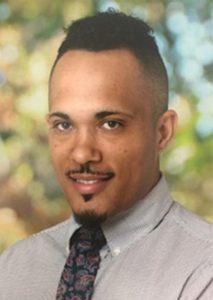
There are many factors to consider when one’s goal is to expand access to summer experiences for all kids, from kindergarten to 12th grade. As the Director of Summer Learning at Boston Beyond, I think about this daily. I am always looking for new ways to meet the diverse needs of Boston students, and create opportunity where there wasn’t before. In Boston we believe “Summer For All” can be achieved, if various institutions align goals and collaborate to create a network that truly spans ages, communities, needs, and interests.
In our 10th year of citywide summer learning, I am pleased to elaborate on Lesson 2 of our Summer For All: Lessons from 10 Years of Boston Summer Learning report, which details how commitment to diversity – in partners, experiences, and perspectives – is key to meeting all students’ needs and ensuring all have access to a transformational summer learning experience.
Cultivate a Diverse Network
“It takes a community to provide youth with the opportunities they need to navigate life’s challenges and become thriving adults. Working together with city and philanthropic leadership, partnered institutions can maximize their resources and have a bigger impact on student outcomes than they can working in isolation.”
Individual interests, developmental stages, neighborhood access and transportation – all come into play in creating a comprehensive summer learning system that impacts every kid. This is why it is critically important for all types of institutions – whether a neighborhood park, a museum, or a business – to opt into the system, and contribute their expertise to the summertime experience. With a common goal to equip youth with the skills they need to succeed (an easy goal for all stakeholders to rally around), new summer learning partnerships can create unique experiences that may not have existed before, that might provide new opportunities to different age groups, populations, or communities lacking summer learning resources. Partners of all kinds can fill gaps in access and opportunity, creating summer experiences that truly saturate a city and reach every kid.
In co-leading Boston’s summer learning efforts (alongside my counterpart at Boston Public Schools), one of my jobs is to identify gaps in access within our network, and work with the community to subsequently fill them. With summer learning as my year-round focus, I have the unique ability to see what our network offers, where and to whom we offer it, and where we can leverage resources to reach more Boston students with high-impact experiences. For example, this past school year we supported school leaders in a high-needs neighborhood to develop a hands-on approach to relationship-building, with the goal of enrolling more of their students in summer learning programs. Boston Beyond forged connections between these schools and new partners, who then worked together to co-develop targeted summer recruitment plans for youth and their families. These efforts will continue to lead to increased student access and enrollment in high quality summer learning programs, while strengthening school and community partnerships. These are the structures that Boston Beyond will continue to create and support as we think about what summer learning will look like in the next 10 years.
When we cultivate new relationships and include new, diverse partners, everyone gets stronger together. Aligned by common goals and measures, each partner in our summer learning network collects data on program quality and student skill development, and has the opportunity to engage in professional development and coaching based on identified areas of improvement. Boston Beyond’s convenings and peer observation model allow partners to learn best practices from one another to incorporate into their own programs. This support empowers new partners to recognize that no matter where they started, they can continue to build and improve upon their program each summer, to yield stronger and stronger outcomes for their students.
A summer learning system not only needs variety in program providers, it also needs diverse support and advocacy to scale and thrive. The extent to which city, school, and philanthropic leaders champion summer learning plays a crucial role in building and sustaining a diverse summer learning system. In 2015, for instance, Boston Mayor Marty Walsh called on our community to reach 10,000 students in the summer learning network by 2017, which bolstered the city to scan its resources, develop new partnerships, and grow the network to impact 10,084 students in summer 2016 (one year earlier than expected.) This year, Mayor Walsh called on higher education, philanthropy, and the business community to increase involvement and help us reach even more students. With city and school leadership recognizing the role of summer learning in student access and achievement, and the philanthropic community providing the resources to responsibly expand, we have been able to continue this growth year over year, reaching our highest number of students to date in summer 2019.
All partners across a community – program providers, schools, businesses, funders, public leaders, and more – have a role to play in building an impactful summer learning network. I am honored to work with our partners every day, leveraging the diverse perspectives and resources of Boston’s stakeholders, to ensure every student has access to a high quality summer learning experience.